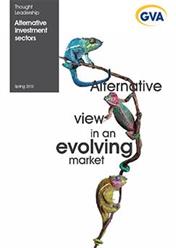Thought Leadership - Alternative Investment Sectors, Spring 2013
There is a diverse range of alternative sectors. Some have a large amount of stock and are currently considered ‘alternative’ simply because they are not in the traditional mainstream sectors. Some are still relatively immature sectors that will grow significantly in size, whilst others are smaller niche sectors, and will probably always be considered ‘alternative’.
By their nature, the alternative sectors have a lower market transparency than the mainstream market, although there is considerable variation. For example investors in healthcare have access to a relatively large amount of market information, whilst almost no data is readily available in the energy and waste management sector.
The alternative sectors are characterised by a prevalence of longer leases. This feature, combined with the relative lack of comparative rental data, means that many leases are index linked or subject to fixed uplifts. The lease term and strength of the covenant is highly important in determining the price.
At the same time, many good quality assets may be under priced in a market where overall supply is limited. Prime yields in these sectors are now at or below 6% with scope for further compression as these markets develop and mature.
But many investors are still relatively unfamiliar with the alternative sectors and so perceive a greater degree of risk than traditional commercial property. However, longer leases and fixed uplifts mean that the reverse is frequently true.
Return to top ↑

